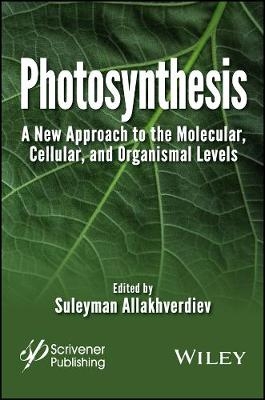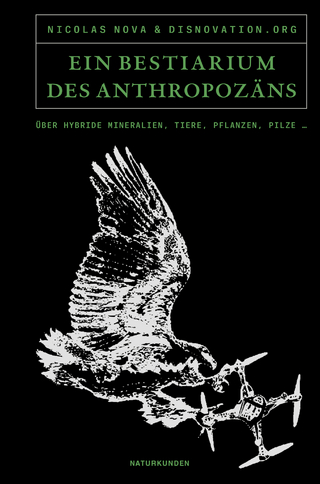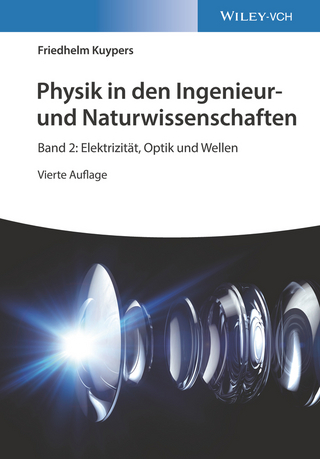
Photosynthesis
Wiley-Scrivener (Verlag)
978-1-119-08370-2 (ISBN)
This edited volume, written by some of the world’s foremost authorities on photosynthesis, presents revolutionary new ideas and theories about photosynthesis, and how it can be viewed and studied at various levels within organisms. Focusing on the molecular, cellular, and organismic levels, the scientists who compiled this volume offer the student or scientist a new approach to an old subject. Looking through this new lens, we can continue to learn more about the natural world in which we live and our place in it.
Valuable to the veteran scientist and student alike, this is a must-have volume for anyone who is researching, studying, or writing about photosynthesis. There are other volumes available that cover the subject, from textbooks to monographs, but this is the first time that a group of papers from this perspective has been gathered by an editor for publication. It is an important and enlightening work on a very important subject that is integral to life on Earth.
Suleyman I. Allakhverdiev, PhD, is the Chief Research Scientist at the Institute of Basic Biological Problems (IBBP), Russian Academy of Sciences. He is on the editorial boards of the International Journal of Hydrogen Energy and The Open Structural Biology Journal and has been a guest editor on four other journals. He has authored or co-authored over 300 papers in various scholarly journals and holds 11 patents. He has been working as a visiting professor in over 30 countries and has presented papers at more than 70 international and national conferences.?He has also organized two international conferences on photosynthesis.
Preface xiii
List of Contributors xvii
1 The Multiple Roles of Various Reactive Oxygen Species (ROS) in Photosynthetic Organisms 1
Franz-Josef Schmitt, Vladimir D. Kreslavski, Sergey K. Zharmukhamedov, Th omas Friedrich, Gernot Renger, Dmitry A. Los, Vladimir V. Kuznetsov and Suleyman I. Allakhverdiev
1.1 Introduction 2
1.2 Generation, Decay and Deleterious Action of ROS 7
1.3 Non-photochemical Quenching in Plants and Cyanobacteria 15
1.4 Monitoring of ROS 19
1.4.1 Exogenous ROS Sensors 20
1.4.2 Genetically Encoded ROS Sensors 25
1.4.3 Chromophore-Assisted Laser Inactivation (CALI) 28
1.5 Signaling Role of ROS 30
1.5.1 Signaling by Superoxide and Hydrogen Peroxide in Cyanobacteria 37
1.5.2 Signaling by 1ΔgO2 and Hydrogen Peroxide in Eukaryotic Cells and Plants 41
1.6 Light-Induced ROS and Cell Redox Control and Interaction with the Nuclear Gene Expression 45
1.7 Second Messengers and Signaling Molecules in H2O2 Signaling Chains and (Nonlinear) Networking 49
1.8 Concluding Remarks and Future Perspectives 55
Acknowledgments 56
Abbreviations 57
References 58
2 Photooxidation of Mn-bicarbonate Complexes by Reaction Centers of Purple Bacteria as a Possible Stage in the Evolutionary Origin of the Water-Oxidizing Complex of Photosystem II 85
Vasily V. Terentyev, Andrey A. Khorobrykh and Vyacheslav V. Klimov
2.1 Introduction 86
2.2 Appearance of Photosynthesis 87
2.3 Classification of Photosynthetic Bacteria 88
2.4 Mechanism of Light Energy Transformation during Photosynthesis 90
2.5 The Water-oxidizing Complex of Photosystem II 92
2.6 Localization and Function of Bicarbonate in Photosystem II 95
2.7 Composition and Electrochemical Properties of Mn2+-bicarbonate Complexes 100
2.8 A Possible Role of Mn2+-bicarbonate Complexes for the Origin and Evolution of the Inorganic Core of the Water-oxidizing Complex of Photosystem II 104
2.9 Investigation of Redox Interaction Between Mn2+ and Type II Reaction Centers of Anoxygenic Photosynthetic Bacteria in the Presence of Bicarbonate 107
2.10 Influence of the Redox Potential of the Р+/Р Pair and Steric Accessibility of P+ on Electron Donation
from Mn2+ to Type II Reaction Centers from Anoxygenic Photosynthetic Bacteria in the Presence of Bicarbonate 113
2.11 Conclusions 121
Acknowledgments 122
Abbreviations 122
References 123
3 Hydrogen Metabolism in Microalgae 133
Anatoly A. Tsygankov, Azat Abdullatypov
3.1 Introduction 133
3.2 Physiology of Hydrogen Metabolism 134
3.3 Hydrogenases 136
3.4 Ferredoxin 139
Contents ix
3.5 Nutrient Deprivation 140
3.6 Physiological Significance of Light-Dependent Hydrogen Production 146
3.7 Practical Importance of Hydrogen Photoproduction 147
3.8 Towards Practical Application of Microalgal Hydrogen Production 151
3.8.1 Hydrogenase Modifications 151
3.8.2 Elimination of Routes Competitive to H2 production 152
3.8.3 The Role of Transmembrane Gradient of the Potential 153
3.9 Conclusion 154
Acknowledgements 154
Abbreviations 154
References 155
4 The Structure and Regulation of Chloroplast ATP Synthase 163
Alexander N. Malyan
4.1 Introduction 163
4.2 The Structure and Functional Basics of Chloroplast ATP Synthase 164
4.3 The Thiol-Dependent Mechanism of Chloroplast ATP Synthase Regulation 166
4.4 The Nucleotide-Dependent Mechanism of Chloroplast ATP Synthase Regulation 167
4.5 The Properties and the Role of Chloroplast ATPase Noncatalytic Sites 168
4.6 Conclusion 173
Abbreviations 173
References 173
5 Structural and Functional Organization of the Pigment-Protein Complexes of the Photosystems in Mutant Cells of Green Algae and Higher Plants 179
Vladimir G. Ladygin
5.1 Introduction 180
5.2 The Mutants as Model Objects 182
5.2.1 Effects of Mutagenic Agents 182
5.2.2 Obtaining Mutants 182
5.3 The Chlorophyll-Protein Complexes 185
5.3.1 Pigment Content of Individual Complexes 185
5.3.2 Identification of Chlorophyll-Protein Complexes 188
5.3.3 Polypeptide Composition of Individual Complexes 188
5.4 Spectral Properties of Native Chlorophyll-Protein Complexes 189
5.4.1 Spectral Forms of Chlorophyll in Native Complexes 189
5.4.2 Fluorescence Spectra of the Chlorophyll in Native Complexes 190
5.5 Functional Organization of the Photosystems 195
5.5.1 Photosynthetic Activity 195
5.5.2 The Value of Photosynthetic Unit 197
5.5.3 The Number of the Reaction Centers of Photosystems 197
5.6 Structural Localization of the Photosystem in Chloroplast Thylakoids 201
5.6.1 Spatial Localization of the Photosystem in Thylakoid Membranes 201
5.6.2 Localization of Carotenoids in Pigment-Protein Complexes of the Photosystems 210
5.7 Molecular Organization of the Complexes of Photosystem I and II 213
5.7.1 Structure of the Complex of Photosystem I 213
5.7.2 Structure of the Complex of Photosystem II 217
5.7.3 The Core Complex of Photosystem II 220
Abbreviations 222
References 222
6 Photosynthetic Carbon Metabolism: Strategy of Adaptation over Evolutionary History 233
Irina R. Fomina and Karl Y. Biel
6.1 Introduction 234
6.2 Photosynthesis in Prokaryotes 235
6.2.1 What Was the First Autotroph on Our Planet? 235
6.2.2 Green Non-Sulfur Bacteria, Green Sulfur Bacteria, Heliobacteria: from the Archaic Way of Carbon Reduction to the Arnon-Buchanan Cycle 240
6.2.3 Purple Bacteria: The Emergence of the Reductive Pentose Phosphate Cycle – Biochemical “Add-ons” to the Arnon-Buchanan Cycle 245
6.2.4 Cyanobacteria: The Reductive Pentose Phosphate Cycle Becomes the Main Path of Carbon in Photosynthesis 247
6.2.5 The Main Stages of Development of Photosynthetic Carbon Metabolism in Prokaryotes 249
6.3 Photosynthesis in Eukaryotes 250
6.3.1 C3 plants: Photosynthesis via the Reductive Pentose Phosphate or Benson-Bassham-Calvin cycle 250
6.3.2 C4 plants: Cooperative Photosynthesis 254
6.3.3 CAM-plants: Crassulacean Acid Metabolism 259
6.3.4 C4-CAM plants: Cooperation of the Second Order 262
6.4 About Compartmentalization and Cooperation between the Reduction and Oxidation Reactions in Photosynthetic Cells 264
6.5 Examples of Physiological Adaptation of Photosynthetic Carbon Metabolism to Environmental Factors at the Cellular, Tissue, and Organism Levels 266
6.5.1 Cooperative Relationship of Phototrophic Endosymbionts and Heterotrophic Host Cells with Carbon Assimilation 266
6.5.2 The Protective Role of Leaf Tissues in Illuminated Plants 283
6.6 General Conclusion 293
Acknowledgements 297
Abbreviations 297
References 298
7 Adaptive Changes of Photosynthetic Apparatus to Higher CO2 Concentration 327
Anatoly A. Kosobryukhov
7.1 Introduction 327
7.2 Higher Concentration of CO2 and Its Effect on the Plants: History of the Question 328
7.3 Influence of the Higher CO2 Concentration on the Growth and Productivity of the Plants 329
7.4 Photosynthesis at Short-Term Increase of CO2 Concentration 331
7.5 Adaptive Changes of Photosynthetic Apparatus at Long-Term Effect of the Higher CO2 Concentration 332
7.6 The Role of Carbohydrate Metabolism in Regulation of the Photosynthetic Apparatus Activity at Increased CO2 Concentration 334
7.7 Soluble Sugars in Leaves and Other Plant Organs 337
7.8 Dependence of Photosynthetic Rate on Environmental Factors and its Regulation 338
Abbreviations 344
References 344
8 Photosynthetic Machinery Response to Low Temperature Stress 355
Evgenia F. Markovskaya, Anatoly A. Kosobryukhov and Vladimir D. Kreslavski
8.1 Mechanisms of Plant Adaptation to Low Temperature 355
8.2 Role of Reactive Oxygen Species 357
8.3 Plant Cell Membranes and Their Role in Response to Low Temperature 358
8.4 Hormonal Response to the Temperature 362
8.5 Phytochrome as a Receptor of Low Temperature 362
8.6 Carbohydrate Function under Low Temperature 364
8.7 Protein Changes 365
8.8 Cold Stress and Photoinhibition 367
8.9 Molecular Mechanisms of Plants’ Response to Low Temperatures 368
8.10 Concluding Remarks and Future Perspectives 370
Acknowledgments 370
References 370
Index 383
| Erscheint lt. Verlag | 25.12.2015 |
|---|---|
| Sprache | englisch |
| Maße | 163 x 236 mm |
| Gewicht | 694 g |
| Themenwelt | Naturwissenschaften ► Biologie ► Allgemeines / Lexika |
| Naturwissenschaften ► Biologie ► Mikrobiologie / Immunologie | |
| Naturwissenschaften ► Geowissenschaften ► Geologie | |
| ISBN-10 | 1-119-08370-2 / 1119083702 |
| ISBN-13 | 978-1-119-08370-2 / 9781119083702 |
| Zustand | Neuware |
| Haben Sie eine Frage zum Produkt? |
aus dem Bereich


